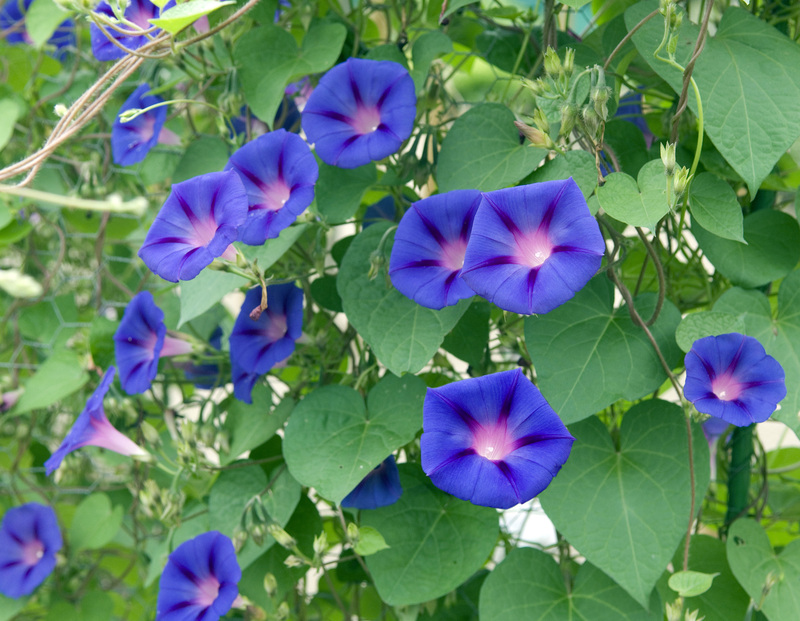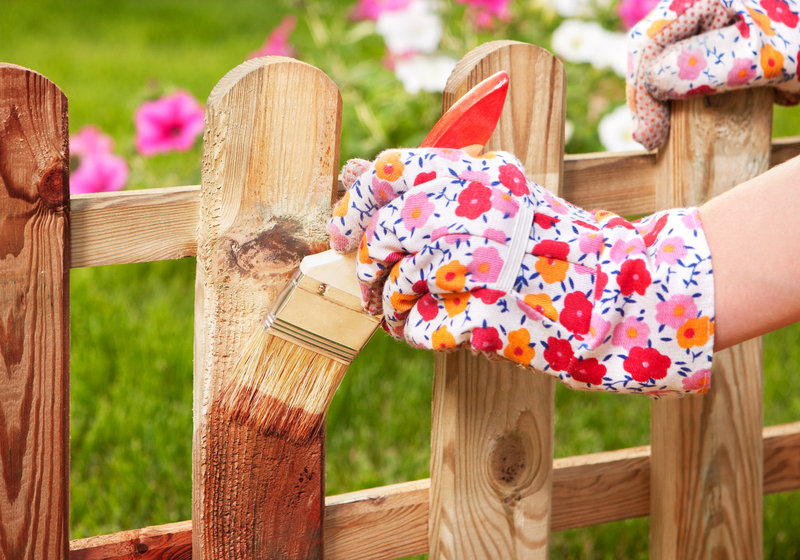Exploring the Benefits of Container Gardening
Posted on 11/09/2025
Exploring the Benefits of Container Gardening
Container gardening has seen a significant rise in popularity over recent years, captivating gardening enthusiasts and urban dwellers alike. Whether you are limited by space, wish to decorate your patio, or aim to have more control over your plants, this versatile approach to growing plants in pots and containers offers abundant advantages. In this comprehensive guide, we'll delve deeply into container gardening benefits, provide tips for getting started, and reveal why this gardening method is ideal for various lifestyles and environments.

What is Container Gardening?
Container gardening refers to the practice of growing plants exclusively in containers, rather than planting them in the ground. Containers can range from traditional clay pots and sleek ceramic planters to repurposed buckets, wooden crates, or even hanging baskets. This method allows for creative flexibility and is suitable for herbs, vegetables, flowers, and even small trees.
Why Choose Container Gardening?
Before diving into the many advantages, it is essential to understand why container gardening is becoming a favored method among novice and experienced gardeners alike. Here are some primary reasons:
- Flexibility in design and placement
- Accessibility for gardeners of all ages and capabilities
- Control over soil quality and pests
- Year-round gardening potential
- Ideal for small spaces and urban environments
The Key Advantages of Container Gardening
1. Perfect for Limited Spaces
One of the most celebrated benefits of growing plants in containers is its suitability for those with limited outdoor area. Urban apartments, condos, and houses with small patios or balconies can easily transform into lush green spaces using cleverly arranged pots and vertical gardens.
- Maximize small balconies
- Create portable gardens on rooftops
- Line stairways, windowsills, or fences with vibrant planters
With container gardening, even those in city high-rises can enjoy fresh basil, tomatoes, or ornamental blooms just a few steps away.
2. Enhanced Soil and Pest Control
When you garden in containers, you have complete control over the soil quality and composition. This allows you to tailor the soil to specific plant needs, ensuring optimal health and growth.
- Reduce risk of soil-borne diseases
- Avoid contaminated or poor native soil
- Easy to correct soil pH and nutrient levels
Additionally, containers create a natural barrier against many ground-dwelling pests, making integrated pest management more straightforward. Moving or isolating a sick plant is much easier, protecting the rest of your garden from infestations or diseases.
3. Portability and Mobility
Container gardening offers a unique level of flexibility as compared to traditional in-ground gardening. You can easily move containers to optimize sunlight exposure, protect delicate plants from harsh weather, or reshuffle your arrangement for seasonal aesthetics.
- Move plants indoors during extreme weather
- Rotate sun-loving crops for even growth
- Bring fragrant or colorful plants closer to living spaces
This versatility is very beneficial for renters, those in temporary housing, or anyone who loves to rearrange their green space for fresh visual appeal.
4. Accessibility for All Gardeners
Container gardening is highly inclusive, making it possible for nearly anyone to participate in gardening. Raised containers, hanging baskets, and lightweight pots provide easy access for those with physical limitations.
- Reduced bending and kneeling required
- Increased access for wheelchair users
- Designed to suit elderly and young children
Gardening in containers can be positioned at a comfortable height on tables, benches, or railing brackets, removing many of the physical barriers found in traditional gardening.
5. Decorative and Creative Flexibility
The aesthetic possibilities of container gardens are virtually endless. With a wide range of container styles, colors, and materials available, you can match any decor or express your creative flair.
- Mix and match plant varieties for colorful combinations
- Use containers as design features or focal points
- Experiment with shapes and sizes
Container gardening enables you to experiment with seasonal displays, thematic arrangements, and unconventional planters, ensuring your outdoor space reflects your personality year-round.
6. Environmentally Friendly Option
Using recycled or upcycled containers reduces waste and supports sustainable gardening practices. Self-watering and water-retentive containers can minimize water usage, while small-scale container gardens encourage local food growth, reducing your carbon footprint.
- Use repurposed materials rather than buying new
- Grow edible plants locally
- Reduce need for pesticides and fertilizers
This green approach to gardening aligns perfectly with eco-conscious lifestyles and modern environmental concerns.
Starting Your Own Container Garden
Choosing the Right Containers
The success of your container gardening adventure depends greatly on selecting suitable containers. Here's what you need to consider:
- Size: Ensure adequate root space for chosen plants.
- Material: Options include ceramic, plastic, wood, metal, or recycled items.
- Drainage: Always use containers with drainage holes to prevent root rot.
- Weight: Heavy containers are stable but harder to move.
Pro tip: Group containers of different sizes and heights to add visual depth and interest to your space.
Selecting the Right Soil
The quality of your container soil is critical. Regular garden soil is usually too dense; instead, opt for high-quality potting mix that ensures good drainage, aeration, and nutrient content. You may wish to supplement it with compost or slow-release fertilizers for best results.
Plant Selection for Container Gardening
Choosing what to grow depends on your goals, available light, and local climate. Here are some popular choices for container gardening success:
- Herbs: Basil, mint, parsley, chives, thyme
- Vegetables: Tomatoes, peppers, lettuce, radishes, dwarf carrots
- Fruits: Strawberries, lemons (dwarf varieties), blueberries
- Flowers: Petunias, marigolds, pansies, geraniums, begonias
- Small shrubs or dwarf trees: Boxwood, miniature roses, olive trees
Be mindful of sunlight requirements and group plants with similar needs together for optimal results.
Watering and Maintenance Tips
Container plants tend to dry out faster than those in the ground, so consistent watering is vital. Here are key maintenance tips:
- Check soil moisture daily during hot months
- Use mulch to retain moisture in larger containers
- Fertilize regularly for vigorous growth
- Prune and deadhead flowering plants to promote blooms
- Check for pests or disease routinely
Self-watering containers or drip irrigation can make maintenance easier, especially for busy gardeners or those with many pots.
Health and Lifestyle Benefits of Container Gardening
Physical and Mental Health Advantages
Engaging in container gardening comes with a range of health benefits:
- Reduces stress and boosts mood
- Encourages light physical activity suitable for all ages
- Provides a sense of accomplishment with visible results
- Promotes healthy eating when growing fruits and vegetables
Spending time tending your plants, soaking in sunlight, and nurturing life can be a powerful boost to both physical and mental well-being. Many find the routine of watering, trimming, and harvesting to be deeply therapeutic.
Learning Opportunities for All Ages
Container gardening creates an interactive, educational experience. Children especially benefit from watching seeds sprout and learning about plant care. Adults can experiment with new crops, try companion planting, or dive into the art of ornamental design.
Container gardens can even serve as nature classrooms, helping families and communities foster greater respect and understanding for the environment.
Social and Community Connections
Another rewarding aspect involves building connections through container gardening. Apartment complexes, urban neighborhoods, and community centers increasingly use container gardening projects to beautify spaces and encourage shared responsibility.
- Organize plant swaps or gardening clubs
- Share seeds, cuttings, and harvests with neighbors
- Create public container installations or pollinator habitats
Sharing knowledge, plants, and produce fosters friendships and helps create more connected and green-minded communities.

Overcoming Common Challenges in Container Gardening
Potential Drawbacks and How to Address Them
While the benefits of container gardening are numerous, there are a few challenges to be aware of:
- Limited root space: Choose appropriate plants and containers, and re-pot as necessary.
- Frequent watering: Consider self-watering pots or water-retaining soil amendments.
- Nutrient depletion: Regularly feed your plants and replace soil annually.
- Temperature fluctuations: Move containers as needed or insulate pots in extreme seasons.
By anticipating these common issues and planning proactively, gardeners can enjoy continued success with minimal frustration.
Conclusion: Why You Should Embrace Container Gardening
Container gardening stands out as a rewarding, flexible, and sustainable way to create green spaces and grow your own food, no matter your living situation. From maximizing small spaces and providing unparalleled design freedom to facilitating easier plant care and connecting people of all ages, the advantages of container gardening are truly far-reaching.
Whether you have a sprawling backyard or a compact balcony, container gardening lets you savor the joys of nurturing plants and harvesting fresh, homegrown produce. By adopting this adaptable approach, you can enhance your home's aesthetics, boost your well-being, and make a positive impact on the environment - all while developing your gardening skills with each passing season.
Start your container gardening journey today and discover a world of potential at your fingertips!

